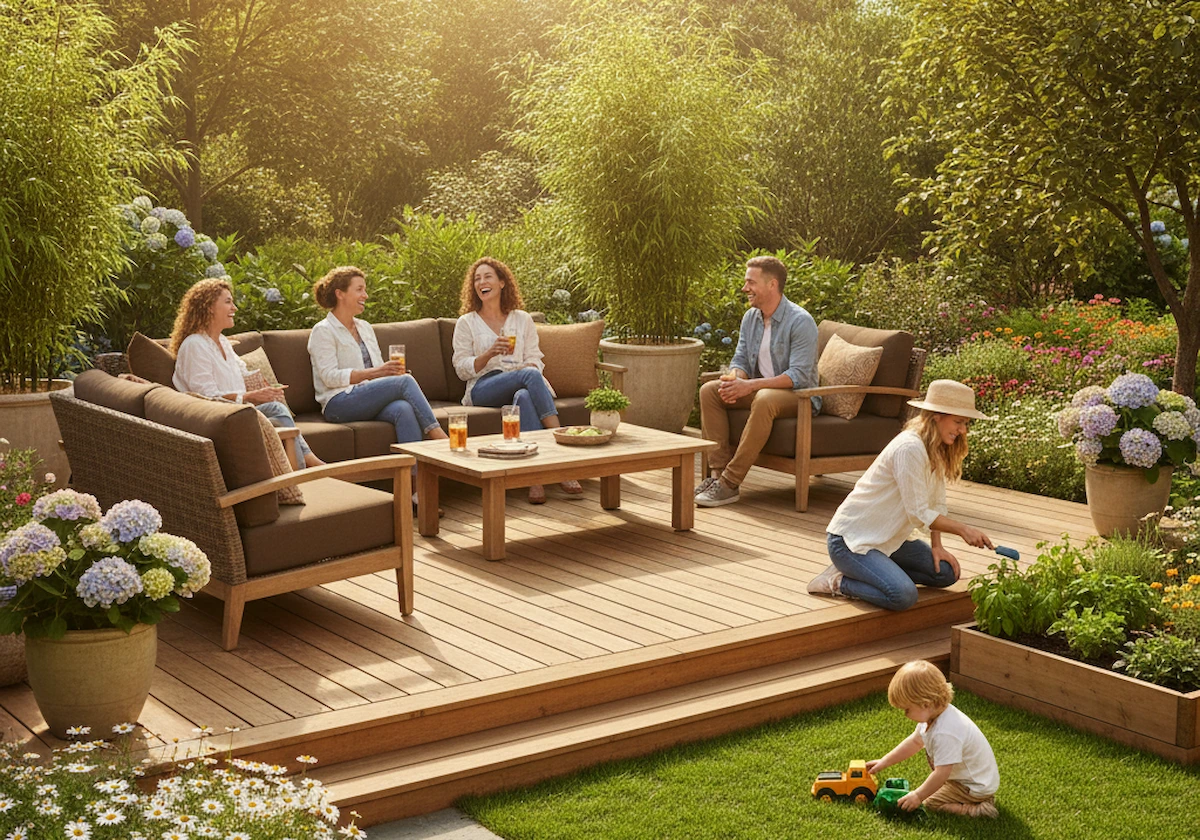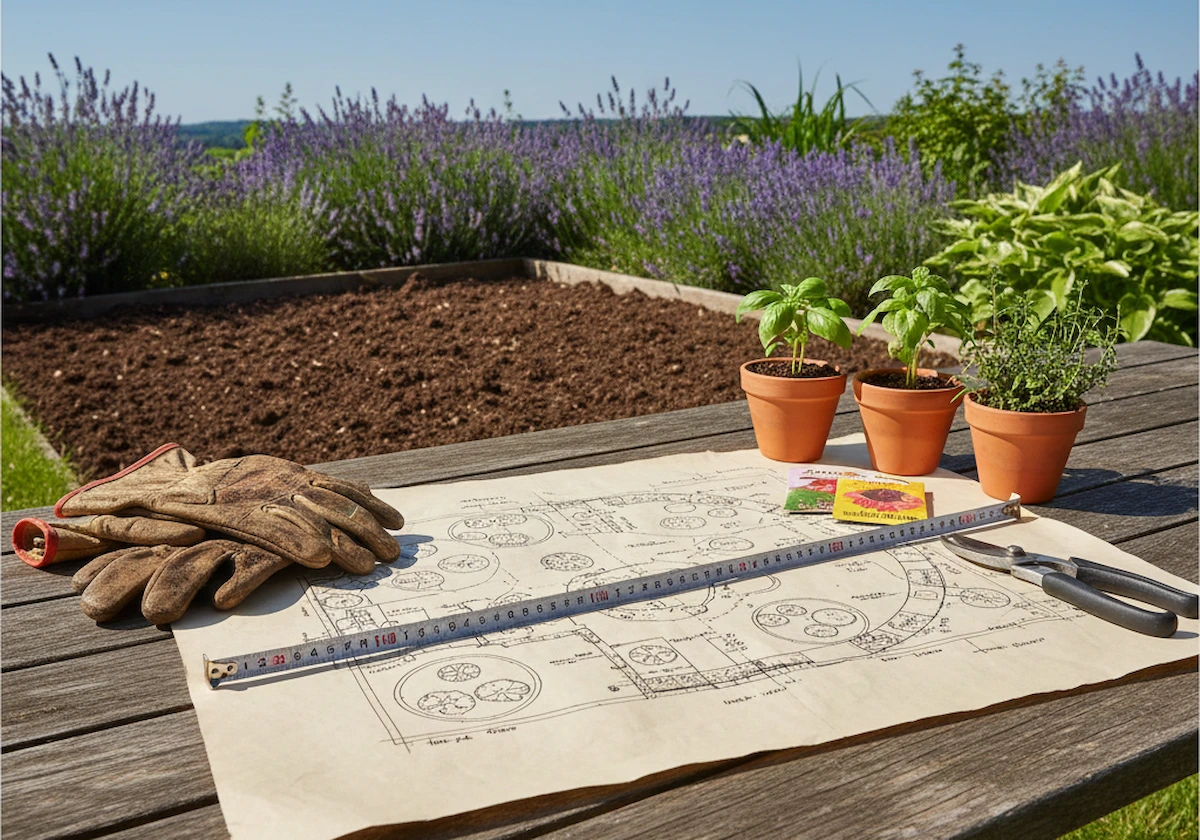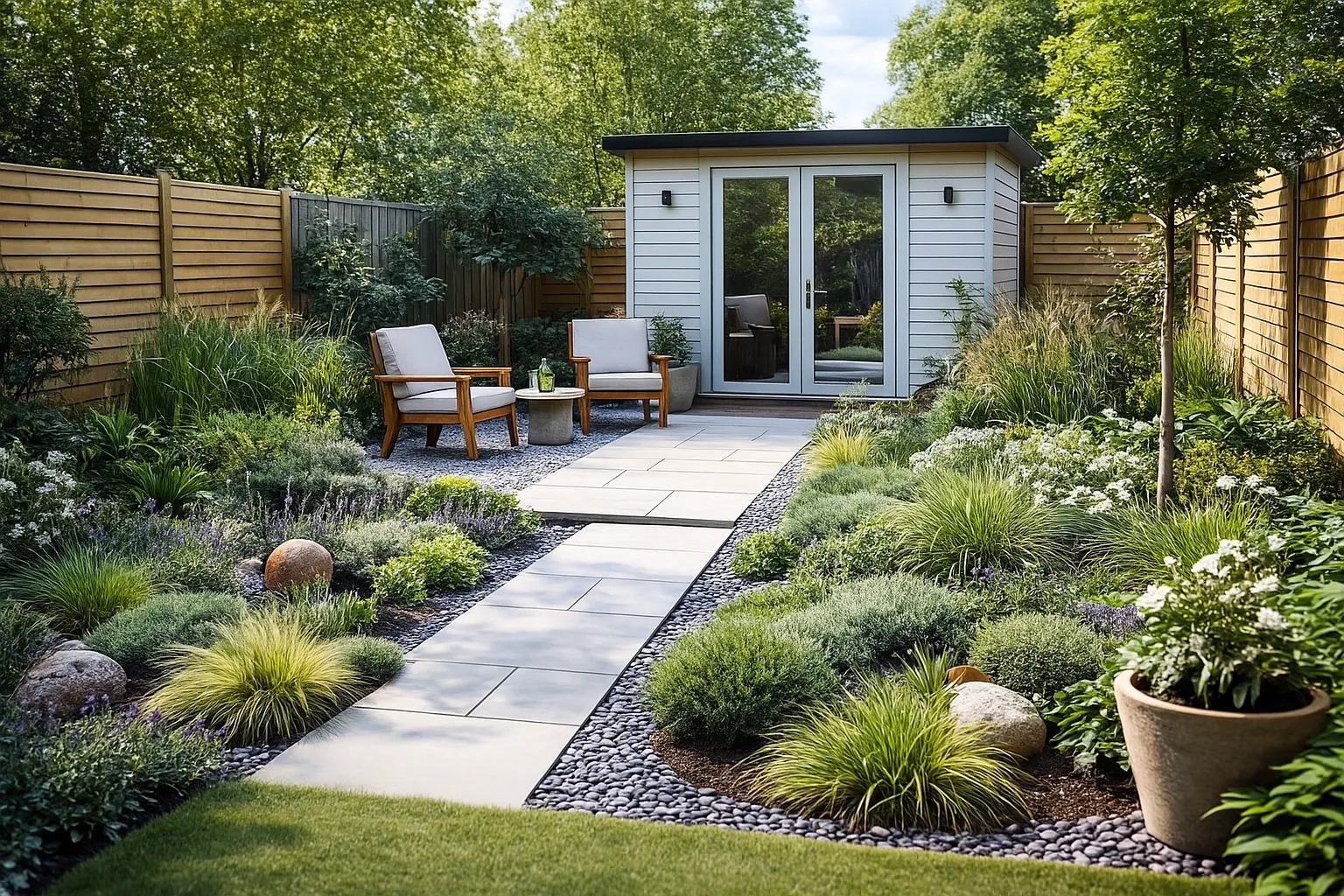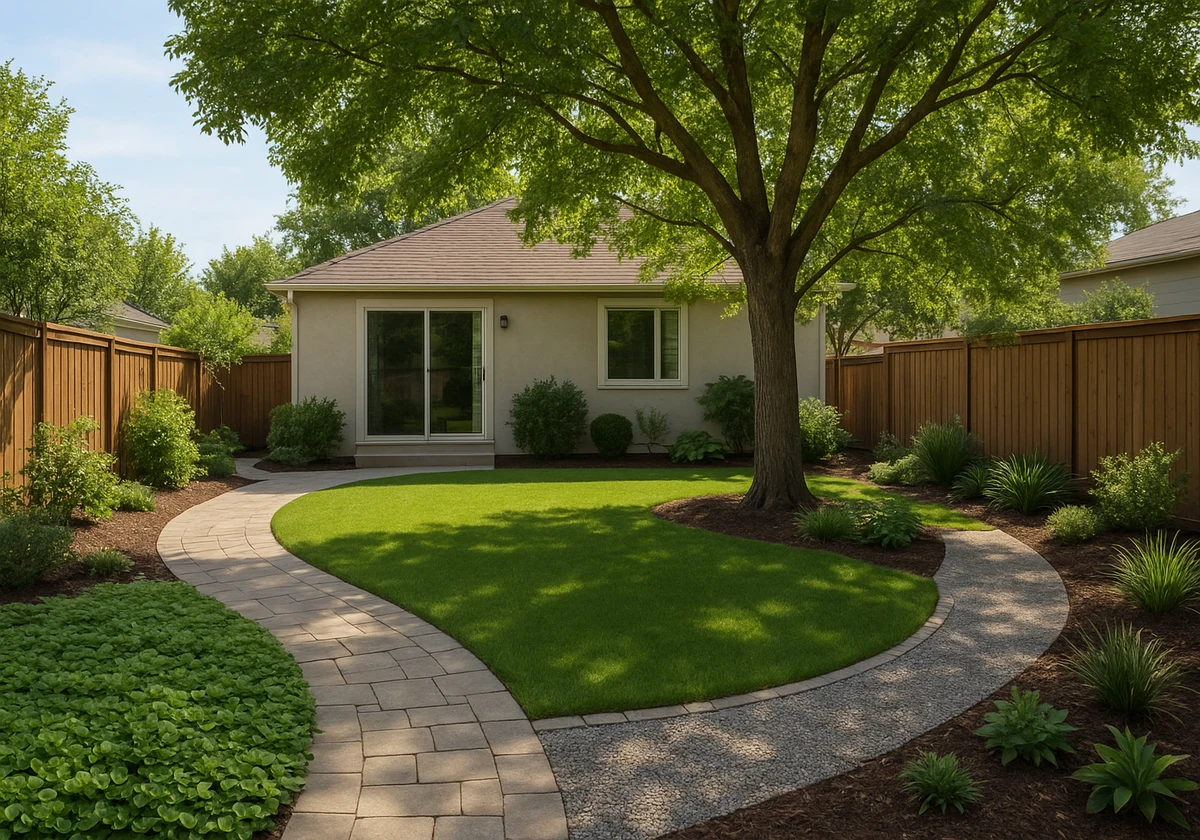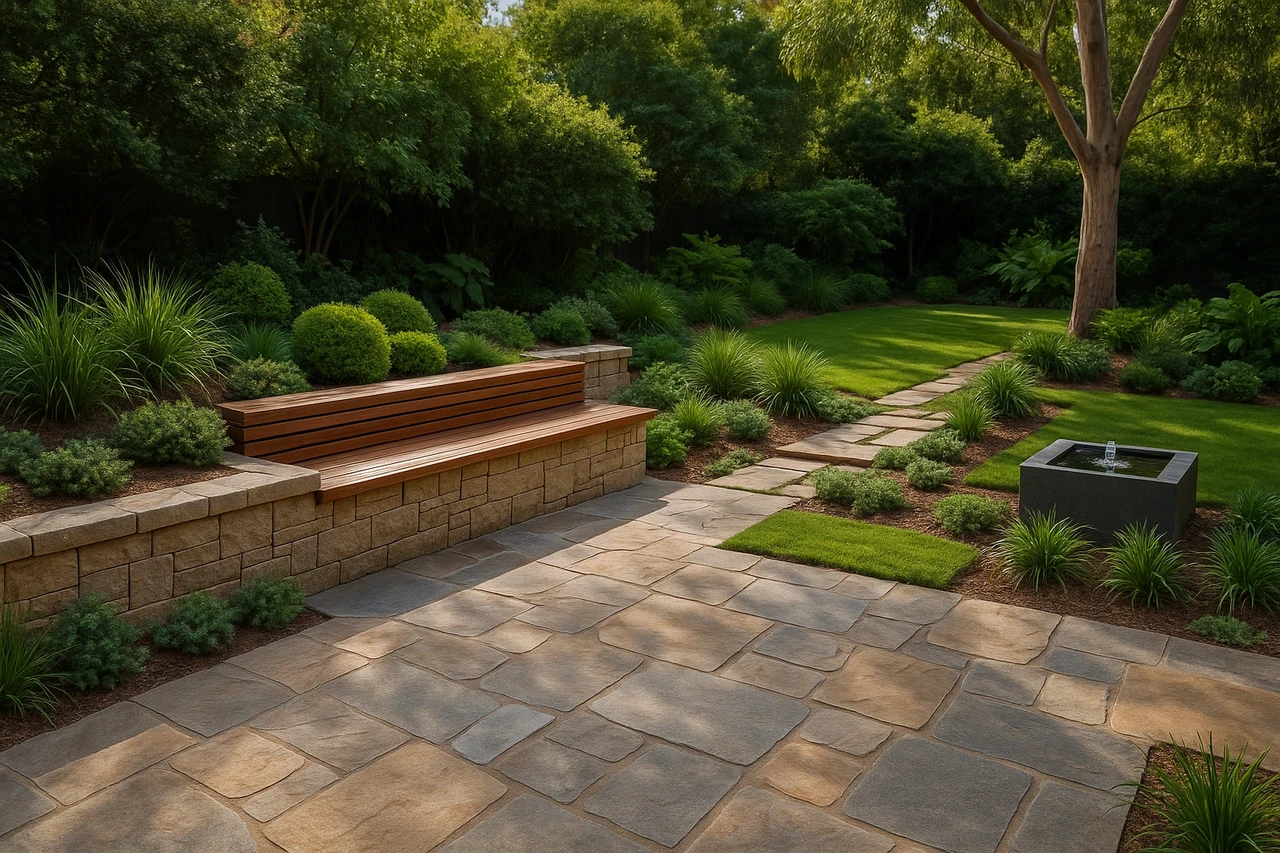Welcome to the complete guide to sustainable landscaping in Australia. We are Design Martus, a landscaping company that helps homeowners create eco-friendly outdoor spaces. And in this guide, we’re going to show you how to redesign your garden, slash your water bills, and create a thriving ecosystem that maintains itself.
We’ve been in the garden design business for years now, so we know a thing or two about making gardens work with Australia’s unique climate. In this guide, we’re going to cover:
- Australian native plants that love your local conditions
- Water-smart systems that practically run themselves
- Soil-building methods that feed your garden naturally
- Design choices that reduce maintenance while supporting wildlife
- Practical steps to start your sustainable garden transformation
Ready? Let’s get to it.
What Makes Landscaping Sustainable?
Most gardeners think sustainable means accepting a brown, boring garden during dry spells. But here’s the thing: that’s the most common myth in Australian gardening. The truth is, real sustainable horticulture creates gardens that look better and cost way less to maintain than traditional designs.
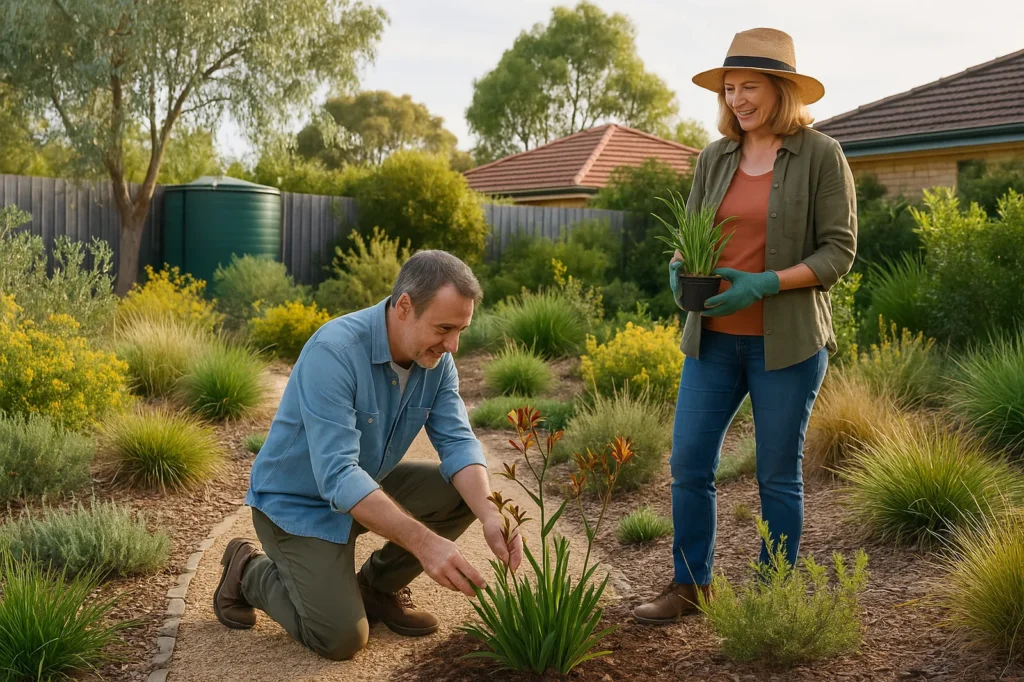
So what’s the core principle here? It’s simple: work with your local climate instead of fighting it. To do the opposite is to waste water, strain against poor soil, and keep unsuitable plants alive.
From this principle flows a clear method, and at its heart, true sustainability relies on what nature already provides. That includes plants adapted to the climate, designs that make the most of rainfall, and soil care that avoids synthetic inputs.
Now that you understand the foundation, let’s look at the stars of sustainable gardens.
Australian Native Plants: Nature’s Perfect Garden Guests
No plants are better suited to Australian gardens than the native ones designed by nature for this environment. These plants have been training for millions of years to excel in exactly the conditions your garden faces every day.
Here’s why practical gardeners are switching to native plants:
Why Native Plants Are Natural Survivors
Our native plants co-evolved with Australian soils, weather patterns, and wildlife for countless generations. They know how to find water during dry times, how to handle nutrient-poor ground, and how to bounce back from extreme weather. That evolutionary wisdom translates into gardens that practically maintain themselves.
Climate-Matched Champions for Every Region
Australia has native plants that work perfectly in every type of garden, from dry inland areas to wet coastal regions. For example, Kangaroo Grass makes a beautiful lawn that never needs watering, and Bottlebrush plants give you flowers all year while bringing birds to your garden.
What’s more, based on our findings from years of garden projects, these climate-matched plants consistently outperform exotic species in both establishment success and long-term resilience.
Simple Steps to Start Your Native Plant Journey
Don’t overthink your plant selection process. So what should you do? Keep it simple: choose three native plants that are absolute winners in your area, then expand your collection from there. Even better, local native plant societies often run sales where you can get expert advice and quality plants at great prices.
Simple Water-Saving Garden Solutions
Let’s be honest about water costs in Australia. They’re not getting any cheaper, and neither are the environmental impacts of wasteful garden irrigation.
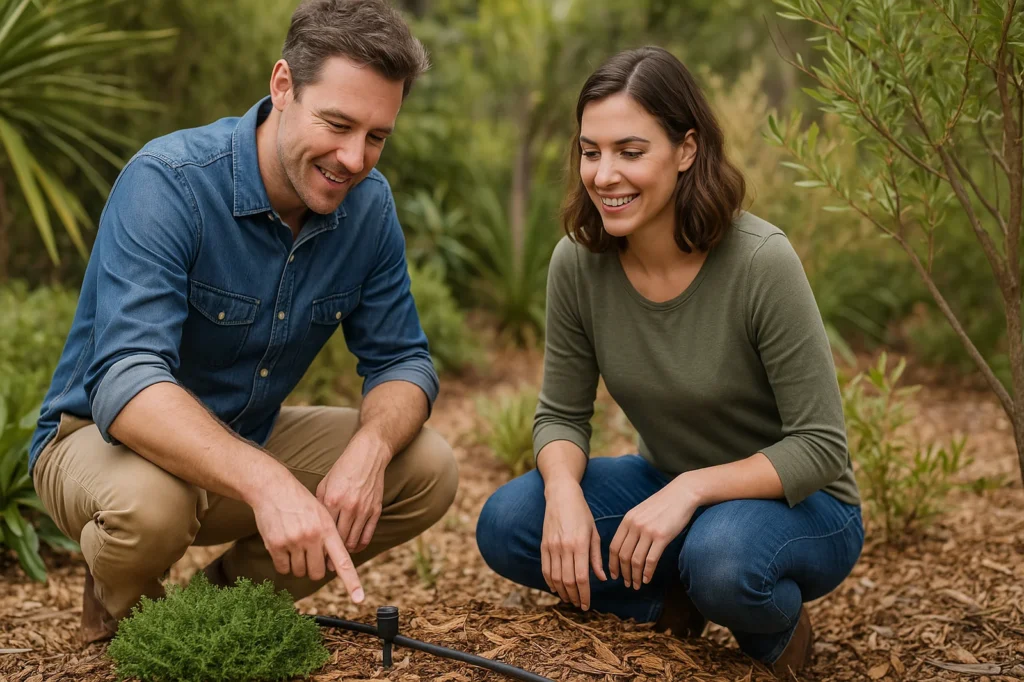
Let’s look at simple solutions for a water-wise garden that thrives:
- Zoned planting that mimics nature: Ever thought about how plants help each other? If yes, then grouping natives with similar water needs lets them form small ecosystems. One clear example is that ground covers keep moisture in the soil, helping nearby trees and shrubs stay hydrated. This teamwork makes your garden hold water longer and cuts down on the need for constant care.
- Irrigation technology that works while you sleep: Automated irrigation systems change everything about garden watering. That’s where the task of watering becomes far less of a chore, because modern tools do most of the work for you. A drip system places water exactly where roots need it, and a timer ensures delivery in the early hours when plants absorb the most. The result is a garden that gets consistent care without draining your time or resources.
- Natural water harvesting that costs nothing: Mulch is more than decoration; it gathers rainfall, reduces water loss, and enriches soil life. Now, combine that with a design that cleverly directs roof runoff, and your garden becomes a self-watering system. Instead of pouring money into irrigation, you’re letting rainfall supply your plants naturally.
For more detailed water-saving techniques, the NSW Government’s garden water efficiency resource offers additional practical strategies.
Beyond water management, soil health becomes the cornerstone of long-term sustainability.
Building Soil That Feeds Itself
Your soil is your garden’s engine room. When it’s working properly, everything else falls into place naturally.
Follow these steps to create soil that works harder so you don’t have to:
- Step 1: Did you know that your kitchen scraps can become valuable compost for your garden? So, instead of tossing it out, vegetable peels, coffee grounds, and fallen leaves can be composted to create nutrient-rich material that nourishes your garden naturally. This simple habit not only reduces waste but also provides a steady supply of slow-release food for plants and soil organisms.
- Step 2: Picture a forest floor covered in fallen leaves and decaying wood. In your garden, you can recreate this same natural mulch system by placing organic materials around your plants. As time passes, this layer protects the soil and fosters earthworm activity, which leads to measurable improvements in soil structure.
- Step 3: Soil scientists know that healthy dirt contains billions of microorganisms per gram. To keep this underground community active, you can feed these invisible workers with natural materials such as aged manure and compost. In return, they’ll strengthen your plants, helping them resist pests and diseases naturally.
- Step 4: In our experience, most soils in Australia are a bit too alkaline. That’s why testing is useful, as it points out the imbalance, and organic amendments return the soil to health.
Design Choices That Work With Nature
A well-designed garden saves you time, money, and energy. When you make thoughtful choices early, the result is a garden that largely takes care of itself.
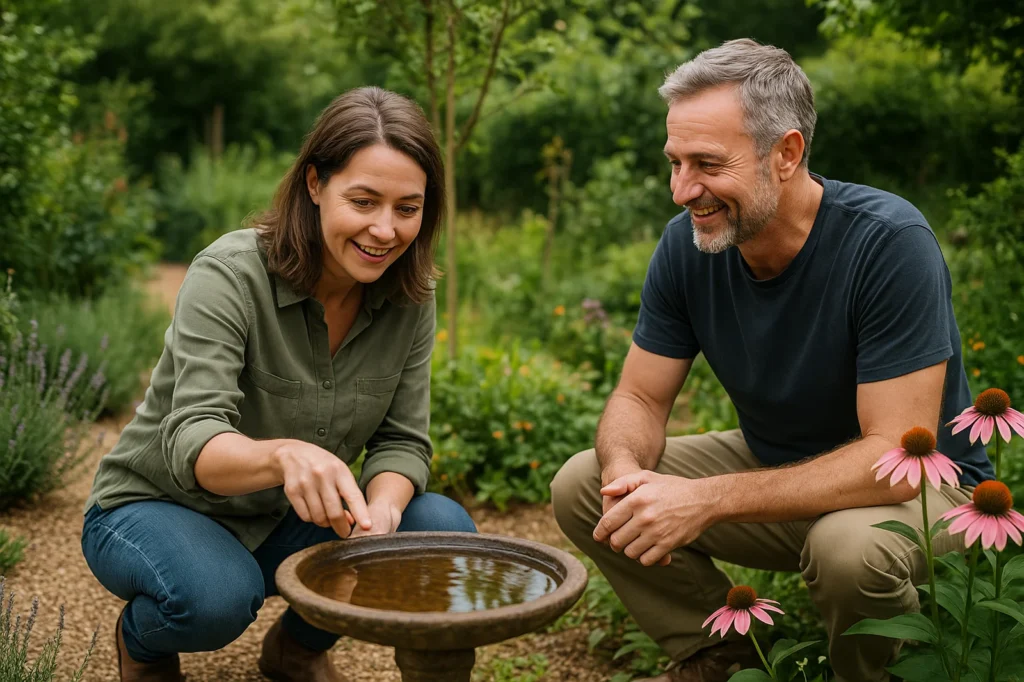
Adopt these design methods to enjoy a garden that requires far less upkeep.
- Water-Wise Surfaces: Use surfaces that let water through, like gravel paths or special pavers with gaps. When it rains hard in Australia, these surfaces soak up the water instead of letting it run off. This feeds your trees and shrubs naturally while costing you less than concrete paths.
- Welcoming Wildlife: A healthy garden ecosystem depends on welcoming its smallest visitors. Among the first to help are native ground covers, providing shelter for insects and setting the stage for balance. At the next layer, flowering shrubs attract bees and butterflies that sustain plant growth. To bring extra life, a bird bath introduces movement and energy into space.
- Materials That Age Gracefully: Weather can be harsh, but the right materials withstand it. For instance, stone gains character as it weathers, while locally sourced timber develops an appealing aged tone. These options suit Australia’s conditions perfectly, giving you a garden that requires less fixing and offers more lasting enjoyment.
These foundational steps prepare you for the design phase of your sustainable garden.
Time to Create Your Dream Garden
Traditional Australian gardens drain wallets through excessive water bills and constant maintenance demands. But the good news is that creating a sustainable garden isn’t as challenging as it seems. In fact, practical solutions exist that can reduce costs while supporting local wildlife in Australia’s unique climate.
Throughout this guide, we explored native Australian plants that don’t need much water and natural ways to build healthy soil. We also went over design options that welcome wildlife and water-smart systems that fit together well.
This means your high-maintenance garden reshapes into a self-sustaining outdoor space that gets more beautiful over time.
Ready to make it happen? Contact Design Martus today for a professional landscaping consultation and transform your outdoor space into an eco-friendly paradise.




